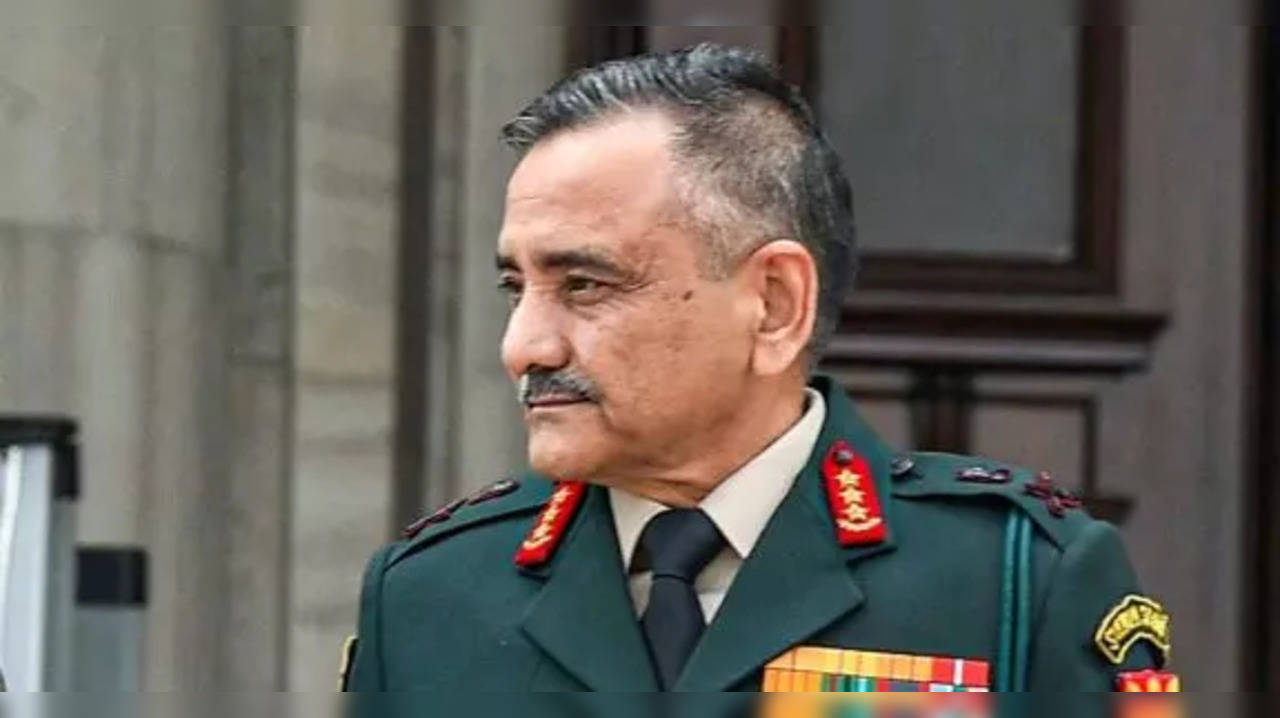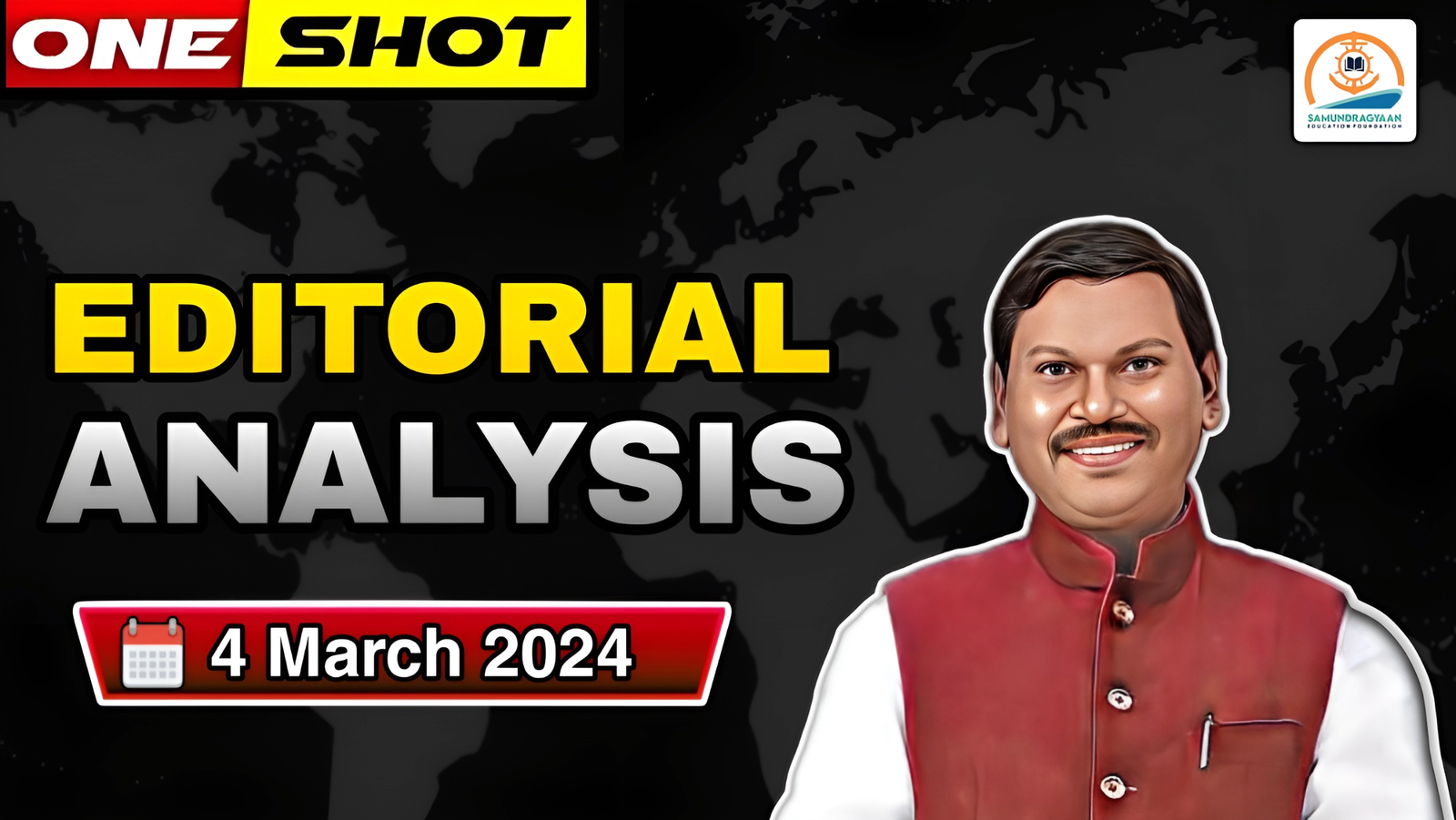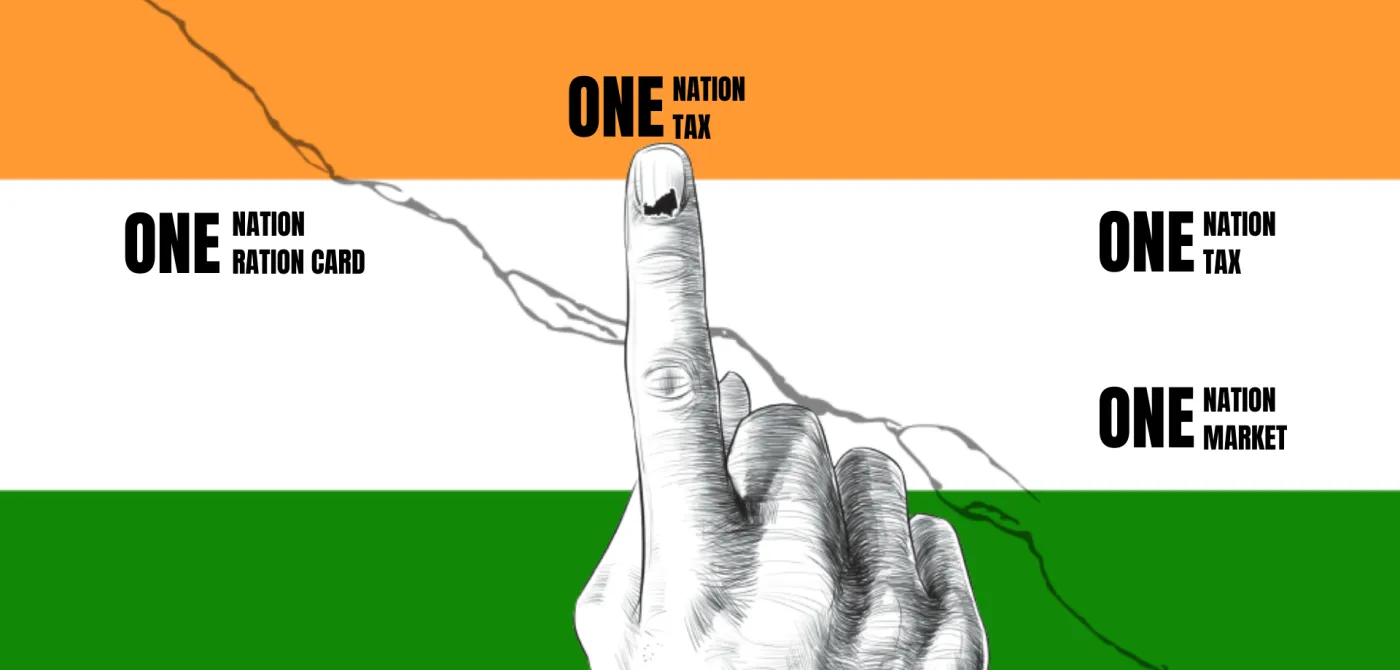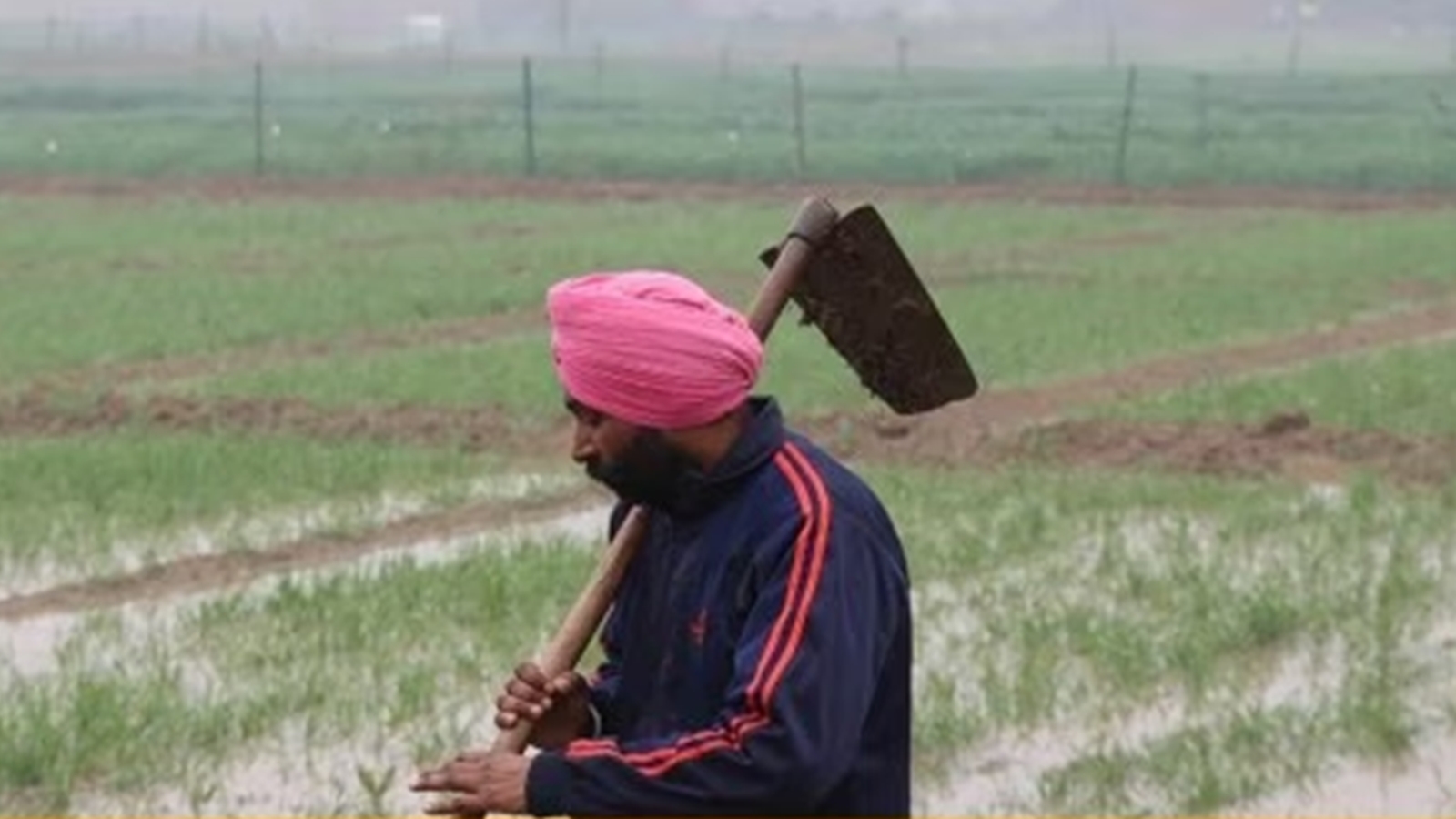Why in News?
- Introduced in FY21, the scheme for providing financial assistance to the states for capital expenditure was extended to FY25 in the Interim Budget 2024.
- Recently, the central government has introduced conditions for untied capex loans to states, such as the States must follow the branding norms for centrally sponsored schemes (CSSs) to access interest-free loans.
What’s in Today’s Article?
- What is Capital Expenditure?
- Why is Capital Expenditure Important?
- Capex vs Revenue Expenditure and Concerns about the Rising Capex in India
- Interim Budget 2024 Announcements wrt Capex
- Conditions for Untied Capex Loans to States
What is Capital Expenditure/Capex?
- Capital expenditure includes money spent by the government on the following:
- Development of physical assets like machinery, equipment, building, health facilities, education, etc.
- Acquiring fixed (land) and intangible assets
- Upgrading an existing asset
- Repairing an existing asset
- Repayment of loan
- The Budget estimate of the government of India’s capital expenditure for the year 2020-21 was Rs 1,084,748 crore.
- Capex of government has been considered to be the prime driver of capex in the economy in the last few years.
- This is because the private sector has not been in a position to invest due to lower demand and high inflation.
Why is Capital Expenditure Important?
- Capital expenditure, which leads to the creation of assets, is long-term in nature and allows the economy to generate revenue for many years by adding or improving production facilities and boosting operational efficiency.
- Acquiring fixed assets gives profits or dividends in future, repayment of loan reduces liability.
- It also increases labour participation, takes stock of the economy and raises its capacity to produce more in future.
Capex vs Revenue Expenditure and Concerns about the Rising Capex in India:
- Unlike capital expenditure, revenue expenditure (salaries of employees, interest payment on past debt, subsidies, pension, etc) is one that neither creates assets nor reduces any liability of the government.
- It is recurring in nature.
- In the FY 2019-20, capital expenditure was 14.2% of Budget Estimates.
- The government had to cut public spending sharply towards the end of the financial year in order that the deficit target could be met.
Interim Budget 2024 Announcements wrt Capex:
- The scheme for providing financial assistance to the states for capital expenditure was extended to FY25 with an outlay of Rs 1.3 trillion as against the revised estimate of Rs 1.05 trillion for FY24.
- In the Interim Budget, the Centre cut the outlay for the capex facility by 19% to Rs 1.05 trillion from the budget estimate of Rs 1.3 trillion for FY24 as some states failed to meet conditionalities.
- Andhra Pradesh, Kerala and Punjab did not receive any funds in FY24 from the liberal loan facility as these states –
- Did not fulfil the conditionalities or
- Failed to fully spend the amounts allocated to them in the previous fiscal under the scheme.
- Of the Rs 1.3 trillion for FY25, Rs 55,000 crore in united capex loans would be rolled out from April 1, 2024.
- The reform/project linked Rs 75,000 crore would be rolled out after the new government is formed in May-June.
Conditions for Untied Capex Loans to States:
- The untied loans would be released to states in two instalments –
- With the first instalment of 66% of the approved amount on meeting the mandatory conditions and
- The second instalment of 34% will be released on utilisation of at least 75% of the amount released in the first instalment.
- To receive interest-free capital expenditure loans from the Centre under the “untied” category, states will have to comply with the branding norms for centrally sponsored schemes (CSSs).
- Also, they have to deposit interest accrued on the unutilised central-schemes funds lying with the state-level single nodal agencies (SNA) by March 31.
- With many states tweaking the names of CSSs, the Centre has made it mandatory that to avail the capex loan, they would have to retain the official name of all schemes.
- Further, the SNA model requires states to notify an SNA for each CSS to receive funds from both the Centre and from state budgets.
Grey zone warfare

Why in news?
- On the last day of the 2024 Raisina Dialogue, India’s Chief of Defence Staff General Anil Chauhan said that grey zone warfare is the latest in informal warfare.
- During a discussion titled ‘The New Wars: Policies, Practices, and Preparation’, he gave an example of the situation in the South China Sea.
- Occasionally, confrontational incidents involving small boats have been reported in the region, over the fact that several countries have extended competing territorial claims here.
What’s in today’s article?
What does grey zone warfare mean?
- About
- Grey zone warfare generally means a middle, unclear space that exists between direct conflict and peace in international relations.
- Multitude of activities fall into this zone — from nefarious economic activities, influence operations, and cyberattacks to mercenary operations, assassinations, and disinformation campaigns.
- Other experts include economic actions too, such as debt traps and economic sanctions.
- Features
- Activities in the grey zone have always been a feature of great-power competition.
- Proxy wars, destabilizing insurgencies, legal warfare (lawfare), and information warfare—by adversaries and allies alike—have been a feature of this conflict.
- Experts claim that such methods are often employed by parties who have not had access to massive resources or power, traditionally. Therefore, such tactics can help gain an advantage over a more technically well-equipped adversary that is more used to conventional warfare.
- Origin
- Experts believe the Cold War era, which began after the end of the Second World War in 1945, led to conditions that favoured grey zone warfare.
- Amid the US-USSR rivalry for ideological and economic dominance, the knowledge that both parties were armed with nuclear weapons meant direct conflicts had to be restrained.
- In today’s nuclear age, the price of traditional wars has become too high, and the danger of things getting worse is very serious.
- Because of this, countries are trying to achieve their goals by being aggressive in secret or by hiding.
What grey zone warfare looks like?
- Experts from the US and Europe have characterised certain Russian and Chinese actions of late as examples of grey zone warfare.
- It includes the Chinese military’s presence in the South China Sea.
- The Philippines is one of the countries which has challenged China’s claims, extending over around 80 per cent of the region.
- In December 2023, it termed the presence of more than 135 Chinese maritime militia vessels near a disputed reef as illegal.
- It accused China of firing water cannons at its boats and ramming into others, while the Chinese coast guard blamed the Philippines for hitting Chinese boats.
- A recent Reuters report mentioned that Taiwan has been expressing concerns for the past four years about increased military actions by China.
- This includes Chinese fighter jets flying over the strait regularly.
- It is part of China’s strategy to pressure Taiwan with activities that fall just short of starting a full-scale conflict.
- Analysts claim that the US has also engaged in similar tactics.
- These include its economic sanctions against China and imposition of duties on Chinese imports to the US, along with maritime reconnaissance.
Why is grey zone warfare seen as a separate category of action?
- The challenges that grey zone warfare poses differ from those of an open conflict.
- Here, action is often covert or indirect, meaning a country’s response needs to be appropriate in terms of its scale.
- These actions could be designed to bait the other party into escalation.
- If this happens, the use of force would then be legitimised as a form of self-defence or response in kind to what the other party does.
- Other reasons for engaging in such tactics include the projection of strength, and to normalise disputed territorial claims by repeatedly marking a presence in those regions.
- Judging by its appearance, grey zone conflict seems mild when compared to traditional strategic competition.
- However, the limited intensity does not make grey zone conflict less vicious.
- Rather than escalate in one-dimension, grey zone conflict tends to escalate in multiple dimensions and leads to unintended over-escalation, creating a nightmare for crisis management.
Obesity on the Rise, High Levels of Undernutrition Persist in India

Why in News?
- According to a new study published by the Lancet, India has become one of the countries with a high “double burden,” of Obesity and Undernutrition.
What’s in Today’s Article?
- Meaning of Obesity & Undernutrition
- Key Highlights of Lancet Study (Data, Impact on Health, Way Ahead, etc.)
Meaning of Obesity & Undernutrition in Health-Related Studies:
- Obesity:
- According to the World Health Organisation (WHO), obesity is an abnormal or excessive accumulation of fat that poses health risks.
- Adults — anyone over the age of 20 years — are considered to be obese, if they have a body mass index (BMI) of 30 kg/m2 or more.
- BMI is a person’s weight in kilograms divided by the square of height in meters, according to the Centers for Disease Control and Prevention.
- School-aged children and adolescents — anyone between the ages of 5 and 19 years — are considered obese, if their BMI is two standard deviations above the mean.
- Underweight:
- Underweight is one of the four broad sub-forms of undernutrition.
- An adult is considered underweight if their BMI is less than 18 kg/m2.
- School-aged children and adolescents are considered underweight if their BMI is two standard deviations below the mean.
Key Highlights of the Study Published by the Lancet:
- Obesity in India:
- Obesity in women has spiked in the past three decades — it increased from 1.2% in 1990 to 9.8% in 2022, according to the study.
- There were 44 million women living with obesity in 2022.
- Meanwhile, obesity in men increased by 4.9 percentage points during the same period, with 26 million men living with obesity in 2022.
- Notably, there has also been a significant increase in childhood obesity.
- There has been a spike of 3 percentage points in girls and 3.7 percentage points in boys over the 32 years that the study examined.
- In 2022, 3.1% of girls and 3.9% of boys were obese.
- Underweight in India:
- Despite a significant decline, the prevalence of underweight and thinness continues to be high across genders and age groups.
- The study found that 13.7% of women and 12.5% of men were underweight.
- Thinness — a measure of being underweight in children — in Indian girls was found to be the highest in the world, with a prevalence of 20.3%.
- And, it was the second highest in Indian boys, with a prevalence of 21.7%.
- Why Women are more Obese than Men?
- Women are more prone to putting on weight because most of them do not have access to or time for physical activities such as walks or gyms.
- They are also likely to put the nutrition of the family above theirs.
- if central obesity were to be considered, obesity in women would be as high as 40% to 50% in many parts of the country.
- A better predictor of future risk of diseases like diabetes and hypertension, central obesity is an excess accumulation of fat in the abdominal area.
Impact of Socio-economic Conditions on Obesity and Undernutrition:
- Obesity is no longer the disease of the rich in India. Eating junk food is cheaper and easier.
- For example, the cost of samosas and pakoras available at roadside shacks is less than fruit and vegetables. While it is not nutritious, it is tastier.
- While it is affecting more people, there continues to be a rural-urban divide when it comes to obesity.
- An analysis of the National Family Health Survey-5 (NFHS-5) data from last year shows that the prevalence of obesity was 31.7% in urban women and 19% in rural women.
- It was 28.6% among urban men and 18.8% among rural men.
- Undernutrition persists in extremely remote and rural parts of poorer states where access to any kind of food is low.
- Undernutrition is prevalent in the extremely poor populations in states like Bihar, Jharkhand, or Odisha, where people might be eating just one meal a day.
Impact of Obesity & Undernutrition on Health:
- The health consequences of obesity are obvious. An increase in obesity, especially in children, is likely to lead to an increase in diseases such as diabetes, hypertension, heart attacks, and strokes.
- The effect of undernutrition, however, is not so obvious. Undernutrition is likely to increase the burden of non-communicable diseases.
- Non-communicable diseases are diseases that are not spread through infection or through other people, but are typically caused by unhealthy behaviors.
Way Ahead:
- Obesity and underweight should not be considered in isolation, according to the study.
- As per the study, the underweight-obesity transition can occur rapidly, leaving their combined burden unchanged or higher.
- It proposes that the focus has to be on programmes that enhance healthy nutrition.
- These may include programmes such as targeted cash transfers, food assistance as subsidies or vouchers for healthy foods, free healthy school meals, and primary care-based nutritional interventions.
- Other than ensuring food security, the study also mentioned that there is an urgent need for supporting weight loss in those with obesity.
- Prevention and management are especially important because the age of onset of obesity has decreased, which increases the duration of exposure.
Calcutta HC judge Abhijit Gangopadhyay to resign
/newsdrum-in/media/media_files/yKgPeDqKZjArQJ7zp9IT.jpg)
Why in news?
- In an unprecedented move, Justice Abhijit Gangopadhyay, a sitting judge of the Calcutta High Court, said that he will resign as a judge and join politics.
What’s in today’s article?
- Procedure to appoint judges of High Courts
- News Summary
Procedure to appoint judges of High Courts
- Constitutional Provision
- Article 217 of Indian Constitution covers the appointment and conditions of a High Court Judge.
- It says that every Judge of a High Court shall be appointed by the President by warrant under his hand and seal after consultation with the Chief Justice of India, the Governor of the State.
- In the case of appointment of a Judge other than the Chief Justice, the Chief Justice of the High Court shall also be consulted.
- The Chief Justice of the High Court is appointed as per the policy of having Chief Justices from outside.
- The collegium system takes a call on the issue of elevation of Judges.
- For the promotion to Chief Justices, the seniority of judges below the Chief Justice will be based on their rank within their own High Courts.
- They will be eligible for consideration as Chief Justices in other High Courts when it would have been their turn for consideration in their own High Courts.
- Eligibility
-
- A person shall not be qualified for appointment as a Judge of a High Court unless he is a citizen of India and—
- has for at least ten years held a judicial office in the territory of India; or
- has for at least ten years been an advocate of a High Court in any State specified in the First Schedule or of two or more such Courts in succession.
- A High Court judge holds office until they are 62 years old.
- Procedure
- A Collegium comprising the CJI and two senior-most judges recommends the names for the appointment for Judges of HCs.
- The CJI is required to consult with two senior-most judges of the Supreme Court.
- However, this process is initiated by the Chief Justice of the High Court concerned.
- The Chief Justice of the High Court is also required to consult his two senior-most puisne Judges before recommending a name for appointment to the High Court.
- The recommendation is sent to the Chief Minister, who advises the Governor to send the proposal to the Union Law Minister.
- Controversy over the Word Consultation
- The constitutional provision gave the CJI and other judges the status of consultant and left the decision of appointment to the executives.
- This has been interpreted by the SC in a different way ultimately leading to the evolution of Collegium system.
- Evolution of Collegium System
- First Judges Case (1982)
- SC held that consultation does not mean concurrence
- Gave Primacy to Executive
- Second Judges Case (1993)
- Court reversed its earlier ruling by changing the meaning of consultation to concurrence.
- Advice tendered by CJI is binding.
- CJI would take into account the views of two of his senior most colleagues.
- Third Judges Case (1998)
- Court gave primacy to the opinion of CJI in the matter of appointment of Judges.
- However, Chief Justice must consult four senior most judges of SC.
- Opinion of all members of the collegium should be in writing.
- Resigning/Removal of judges of High Courts
- A Judge may, by writing under his hand addressed to the President, resign his office;
- a Judge may be removed from his office by the President in the manner provided in clause (4) of article 124 for the removal of a Judge of the Supreme Court (impeachment process).
News Summary: Calcutta HC judge Abhijit Gangopadhyay to resign
- The judge, who is due to retire in August 2024, has been at the centre of controversy for his frequent remarks against his own colleagues, the ruling party of West Bengal and its leaders.
Justice Abhijit Gangopadhyay to resign – Analysis
- Not a new phenomenon
- A sitting judge of a Constitutional court resigning to join politics is not new.
- Former CJI Koka Subba Rao in 1967 had resigned three months before his retirement to contest Presidential elections as the Opposition candidate against Congress’s Zakir Hussain.
- Barely six weeks before his retirement, former SC judge Baharul Islam resigned in 1983 to contest the Lok Sabha elections from Barpeta, Assam.
- Debate around the independence of the judiciary
- The recent announcement by the Abhijit Gangopadhyay marks a telling moment in the discourse around the independence of the judiciary.
- It comes at a time when the bar in the state is deeply divided, reflecting – and sometimes shaped by – the fault-lines of the state’s politics.
- Moreover, for more than two years, both in his judicial orders and in media interviews, Justice Gangopadhyay has attacked the ruling party of WB.
- Against these backdrops, Justice Gangopadhyay’s decision would send a bad message about the judiciary.
- It is not in judicial temperament to be hearing cases, deciding for or against the government till a week ago, and then to resign and join politics when elections are announced.
- It raises questions over the independence of judiciary.
- No internal mechanism to maintain judicial discipline
- There is no mechanism to deal with judges for crossing the line between judicial discipline and entering politics, while still in office.
Generative Artificial Intelligence (GenAI)

Why in the News?
- The Central government issued an advisory to all intermediaries and generative AI platforms using artificial intelligence (AI) models, software or algorithms.
- As per the advisory, all the above-mentioned entities to seek permission from the government and label their platforms as “under testing” before making them available to the public.
What’s in Today’s Article?
- About Generative AI (Meaning, Working, Applications, etc.)
- News Summary
- Role/Influence of GenAI on Elections in 2024
About Generative Artificial Intelligence:
- Generative AI refers to deep-learning models that can take raw data and “learn” to generate statistically probable outputs when prompted.
- Generative AI is powered by foundation models (large AI models) that can multi-task and perform out-of-the-box tasks, including summarization, Q&A, classification, and more.
- With minimal training required, foundation models can be adapted for targeted use cases with very little example data.
How Does Generative AI Work?
- Generative AI works by using a Machine Learning model to learn the patterns and relationships in a dataset of human-created content.
- It then uses the learned patterns to generate new content.
- The most common way to train a generative AI model is to use supervised learning – the model is given a set of human-created content and corresponding labels.
- It then learns to generate content that is similar to the human-created content and labeled with the same labels.
Common Generative AI Applications:
- Generative AI processes vast content, creating insights and answers via text, images, and user-friendly formats. Generative AI can be used to:
- Improve customer interactions through enhanced chat and search experiences,
- Explore vast amounts of unstructured data through conversational interfaces and summarizations,
- Assist with repetitive tasks like replying to requests for proposals, localizing marketing content in five languages, and checking customer contracts for compliance, and more.
News Summary:

- All artificial intelligence (AI) models, large-language models (LLMs), software using generative AI or any algorithms that are currently being tested, must seek “explicit permission of the government of India” before being deployed for users on the Indian internet.
- The Ministry of Electronics and Information Technology (MeitY) issued a late-night advisory on March 1, a first-of-its-kind globally.
- It asked all platforms to ensure that their computer resources do not permit any bias or discrimination or threaten the integrity of the electoral process by the use of AI, generative AI, LLMs or any such other algorithm.
- The government advisory comes days after a social media post on X claimed that Google’s AI model Gemini was biased when asked if Prime Minister Narendra Modi was a “fascist”.
- The user claimed that Google’s AI GPT model Gemini was “downright malicious” for giving responses to questions which sought to know whether some prominent global leaders were “fascist”.
- Google later said it was working to fix the issues and was temporarily stopping Gemini from generating images as well.
Role/Influence of GenAI on Elections in 2024:
- 2024 will see high-stakes elections in over 50 countries, including India, the US, the UK, Indonesia, Russia, Taiwan, and South Africa.
- Like in previous elections, one of the biggest challenges voters will face will be the prevalence of fake news, especially as AI technology makes it easier to create and disseminate.
- The World Economic Forum 2024 Global Risk Report ranked AI-derived misinformation and its potential for societal polarization as one of its top 10 risks over the next two years.
- People with very little technical expertise are capable of using generative AI tools to disseminate fake text, images, videos, and audio across a large digital base in multiple different languages.
- In addition to spreading propaganda using a small data set, AI is capable of creating deep-fakes and generating voice-cloned audio, presenting significant challenges for governments and organisations across the world.
- Through its mastery of language, AI can form intimate relationships with people, using that intimacy to personalize messages and influence worldviews.
- In India, AI is also being used by politicians to reach out to more people, especially in rural areas.
- For example, a real-time AI-powered tool was used to translate Prime Minister Narendra Modi’s speech from Hindi to Tamil during an event in Uttar Pradesh in December 2023.
- As with any new technology, there is a question of how AI can be used and misused.
- Many respond to the prospect with alarm, while others see its potential as a positive force.
40 pharma PLI projects launched

Why in news?
- Union govt has inaugurated 27 greenfield bulk drug park projects and 13 greenfield manufacturing plants for medical devices.
- These forty greenfield projects were inaugurated under the PLI schemes for manufacturing bulk drugs and medical devices.
- A bulk drug, also known as an active pharmaceutical ingredient (API), is the chemical substance responsible for the therapeutic effects of a pharmaceutical product.
- i.e., it is the primary ingredient in a medication that produces the intended medical effect.
What’s in today’s article?
- The pharmaceutical industry in India
- News Summary
The pharmaceutical industry in India: Notable achievements
- The Indian pharmaceutical industry, often referred to as ‘the pharmacy of the world’, contributes immensely to global public health and promoting universal healthcare access.
- India ranks 3rd worldwide for production by volume and 14th by value.
- India is the largest provider of generic medicines globally, occupying a 20% share in global supply by volume.
- The pharmaceutical industry in India offers 60,000 generic brands across 60 therapeutic categories.
- It is the leading vaccine manufacturer globally with 60% of the world’s vaccines comes from India.
Industry scenario
- Foreign Direct Investment (FDI)
- 100% FDI in the Pharmaceutical sector is allowed under the automatic route for greenfield pharmaceuticals.
- 100% FDI in the pharmaceutical sector is allowed in brownfield pharmaceuticals; wherein 74% is allowed under the automatic route and thereafter through the government approval route.
- Market Size
- The pharmaceutical industry in India is valued at $50 bn in 2022-23 and exports accounting for 50% of the production.
- It is expected to reach $65 bn by 2024 and to $130 bn by 2030.
- Export
- India is a major exporter of Pharmaceuticals, with over 200+ countries served by Indian pharma exports.
- India supplies over 50% of Africa’s requirement for generics, ~40% of generic demand in the US and ~25% of all medicine in the UK.
- For the period 2021-22, export of drugs and pharma products stood at $24.6 bn compared to $24.44 bn as of 2020-21.
- The Indian pharma industry witnessed exponential growth of 103% during 2014-22 from $11.6 bn to $24.6 bn.
Support extended by the govt
- PLI scheme
- PLI for Pharmaceuticals:
- The scheme was launched with an outlay of INR 15,000 Cr until FY 2027-28.
- The aim is to boost India’s manufacturing capabilities by increasing investment and production in the sector and contributing to product diversification to high-value goods.
- PLI for Promoting Domestic Manufacturing of Medical Devices
- The scheme, with an outlay of INR 3420 Cr till FY 2027-28, is being provided for the creation of common testing and laboratory facilities/centres in four Medical Device Parks.
- Vision Pharma 2047
- Make India a global leader in the manufacturing of affordable, innovative & quality pharmaceuticals & medical devices for the goal of Vasudhaiva Kutumbakam
- Vishwaguru in innovation & Research for delivering health care products to future generations in a sustainable manner, introducing natural products
- Medical Devices to be an integral part of global supply chains for raw materials, components, spare parts, assemblies/subassemblies, etc.
- Digitisation and technology upgradation in the delivery of services & products under Jan Aushadhi Pariyojana
- National Pharmaceutical Policy (2023)
- The policy is being drafted to serve as a comprehensive framework to address the challenges faced by Indian Pharmaceutical industries.
- The draft policy encompasses five key pillars:
- Fostering Global Pharmaceutical Leadership, Promoting Self-Reliance, Advancing Health Equity and accessibility, Enhancing Regulatory Efficiency in the Indian Pharmaceutical Sector and Attracting investments.
- Scheme for Strengthening of Pharmaceuticals Industry (2022)
- The scheme, launched with a total financial outlay of INR 500 Cr until FY 2025-26 to:
- strengthen the existing pharmaceutical clusters’ capacity by creating common facilities;
- facilitate MSMEs of a proven track record to meet regulatory standards; and
- facilitate growth and development of Pharmaceutical and Medical Devices Sectors.
- Scheme for Promotion of Bulk Drug Parks (2020)
- The scheme boosts domestic manufacturing of identified KSMs, Drug Intermediates and APIs by attracting large investments in the sector.
- Financial assistance, up to INR 1000 Cr, will be provided for the creation of common infrastructure facilities in three Bulk Drug Parks selected in Gujarat, Himachal Pradesh, and Andhra Pradesh.
News Summary: 40 pharma PLI projects launched
- Forty greenfield projects under the PLI schemes for manufacturing bulk drugs and medical devices were inaugurated by the government.
- This included 27 greenfield bulk drug projects and 13 manufacturing plants for medical devices.
Key highlights of the speech delivered Union Health Minister
- Highlighted importance of PLI scheme in Pharma
- The PLI scheme’s success has reduced India’s dependence on imports for medicines, API and medical devices.
- Instead of importing goods worth Rs 75,000 crore, the country will now be exporting drugs and products worth Rs 75,000 crore.
- The department of pharmaceuticals is implementing three PLI schemes — pharmaceuticals, bulk drugs and medical devices.
- For the PLI scheme for pharmaceuticals, the government has approved 55 applicants with an incentive outlay of Rs 15,000 crore.
- As many as 138 products from 26 PLI applicants have been approved for greenfield manufacturing of medical devices with an outlay of Rs 3,420 crore.
- The bulk drugs PLI includes manufacturing 41 bulk drugs with a total outlay of Rs 6,940 crore.
- Revival of drug manufacturing
- He cited the example of Penicillin G, which India had stopped making for the last 30 years after large-scale dumping led to plants shutting down.
- Penicillin G will now be made in the country, with the plant expected to be operational in June 2024.












/newsdrum-in/media/media_files/yKgPeDqKZjArQJ7zp9IT.jpg)


